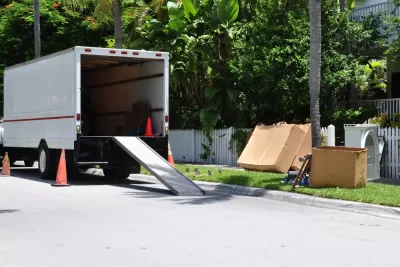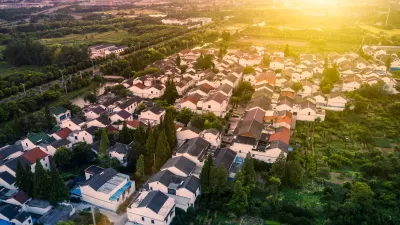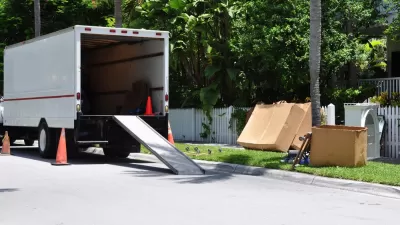Staying in place is more and more the norm, even among historically mobile young people.

If U.S. migration trends are any indicator, we're living in a less-mobile, less-dynamic age. "For the first time since the Census Bureau began recording annual migration statistics, fewer than 10% of Americans changed residence in a single year, according to just-released data for 2018-19," William H. Frey writes.
Basing his discussion on the Census Bureau's newly-released data on geographic mobility, Frey notes that migration trends show a "fairly consistent decline since the late 1940s to 1960s period, when roughly one-fifth of Americans changed residence annually." As one might expect, the Great Recession further exacerbated that trend. But migration hasn't surged back up with the economy.
"Especially noteworthy," Frey says, "are the migration declines for the nation's young adult population, now mostly occupied by millennials." Usually the population's most mobile segment, young adults aged 18-34 are increasingly staying put due to high housing costs, underemployment, and related factors.
Frey notes that low migration may still be an aftereffect of the recession, in which case "mobility might rise somewhat for millennials and their Gen Z counterparts as the economy continues to prosper. Yet even so, these downward migration trends suggest a future of somewhat less demographic dynamism, cutting off people and places from broader economic changes and opportunities nationwide."
FULL STORY: For the first time on record, fewer than 10% of Americans moved in a year

Alabama: Trump Terminates Settlements for Black Communities Harmed By Raw Sewage
Trump deemed the landmark civil rights agreement “illegal DEI and environmental justice policy.”

Planetizen Federal Action Tracker
A weekly monitor of how Trump’s orders and actions are impacting planners and planning in America.

The 120 Year Old Tiny Home Villages That Sheltered San Francisco’s Earthquake Refugees
More than a century ago, San Francisco mobilized to house thousands of residents displaced by the 1906 earthquake. Could their strategy offer a model for the present?

Opinion: California’s SB 79 Would Improve Housing Affordability and Transit Access
A proposed bill would legalize transit-oriented development statewide.

Record Temperatures Prompt Push for Environmental Justice Bills
Nevada legislators are proposing laws that would mandate heat mitigation measures to protect residents from the impacts of extreme heat.

Downtown Pittsburgh Set to Gain 1,300 New Housing Units
Pittsburgh’s office buildings, many of which date back to the early 20th century, are prime candidates for conversion to housing.
Urban Design for Planners 1: Software Tools
This six-course series explores essential urban design concepts using open source software and equips planners with the tools they need to participate fully in the urban design process.
Planning for Universal Design
Learn the tools for implementing Universal Design in planning regulations.
Clanton & Associates, Inc.
Jessamine County Fiscal Court
Institute for Housing and Urban Development Studies (IHS)
City of Grandview
Harvard GSD Executive Education
Toledo-Lucas County Plan Commissions
Salt Lake City
NYU Wagner Graduate School of Public Service





























